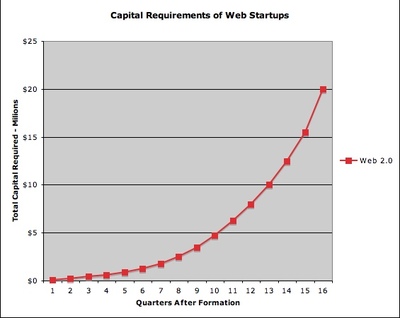Angel vs VC?
AVC regular Charlie Crystle asked me this question yesterday in the comments:
Fred, it might be helpful to some of your readers to explain when a startup should seek angel vs seed/early stage VC.
If I need $250,000 to get to 100 customers, or $1 million to get to X, and I can raise both amounts from either Angels or VCs, where do we turn?
And let's say both have significant interest, and the terms are the same, which is a better choice? (I no longer have an opinion on this, having gone both directions).
There are really two questions in here. The first is when you should SEEK angel vs VC and the second is if you have the option of taking money from both what you should do.
On the first, I believe entrepreneurs should seek angel money when their product is not yet complete, is not in the market and thus they cannot demonstrate real market traction to investors. There are multiple reasons for this and I'll try to articulate the most important of them.
A company without a product in the market is a very risky proposition. Some VC firms will invest at this stage but I am not sure its entirely appropriate for VCs to invest at this stage. Our firm will do it when we are backing a serial entrepreneur with a super strong track record that we are very familiar with. Otherwise, we stand on the sidelines and watch with interest but no capital at risk. A syndicate of angels, each with a small amount of capital at risk in the project, is a much more appropriate source of capital for a company at this stage because the risk has been well syndicated among the group.
Angels are also more hands off and I believe hands off investors are better for a company where defining, building, and tuning product is the primary exercise. VCs have a responsibility to their partners, both the partners in their firm and the partners who fund their firm, to be highly engaged in the business. So like it or not, they are going to be engaged in the business. I think it is best when that engagement is applied to a product that is in the market and gaining traction, and building the business is the primary exercise.
Finally, selling a VC on a concept on a whiteboard is a very hard sale. It is extremely time consuming with very little chance of success. Selling an angel on a concept is much easier. So simply in terms of where you should spend your time raising capital, angels are a better target in the "concept to product" stage.
The second question, what to do if you have the option of taking money from both sources on the same terms, is more interesting in many ways.
My answer is do both, if you can. When we participate in seed rounds, we most often do it by ourselves with a syndicate of high quality angels. We have done this at least a dozen times now and it works extremely well. We behave as if we are one of the angels and try to be relatively hands off. And we hope that the angels will add value just as they do in their other syndicates where there is not a VC firm involved.
But when the company needs another round of financing, we are there to provide more financing. Sometimes the angels follow in the successive rounds. But mostly they do not. It really doesn't matter, because we can fund the company on our own as long as the capital requirements are modest.
This is our preferred model and we have used it with great success. I think it benefits entrepreneurs the most as well. There are a number of VC firms that use this model. I first saw it practiced by Brad Feld about a decade ago in the seed deals he was doing in the Boulder area when he was at Mobius and I admired it immediately.
If for some reason, you must choose between VCs and angels, then I would choose a VC firm, as long as you have a very good relationship with the firm and the specific individual who will be leading the investment from the firm. In almost every situation, you are going to need more than one round and VCs can and will do multiple rounds and angels often cannot.
I will end this with a comment on the emerging seed and super seed fund models. They exist somewhere between angels and VCs and some are growing and turning into full blown VCs as I have mentioned recently in another blog post on this topic. Seed and super seed funds are "institutional angels" and as such I would mostly categorize them as angels. But many of them do have more capital at their disposal and can, at times, provide additional rounds of funding. So in some ways they are a hybrid. A syndicate of a seed fund or super seed fund and angels is a great way to go if you can put that together. A syndicate of a VC, a seed fund, and some angels might even be better.
To finish this post, I think entrepreneurs should target angels and seed funds when they are pre-launch but if they have the opportunity to pair a VC firm with angels and seed funds into a single syndicate they should do that because it will provide most stable funding platform for the business going forward.







